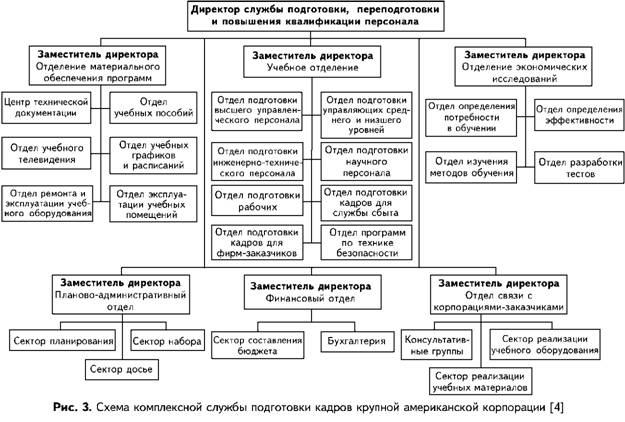home
 Management Management
 Theory and practice of human resource management - Shchekin GV Theory and practice of human resource management - Shchekin GV
|
Theory and practice of human resource management - Shchekin GV
7.3. Organization of in-house training
Western experts believe that the objectives of continuing education of personnel in production are listed in Table. 3 [3, p. 53-89].
By providing a rigid linking education with economic and social criteria, Western companies in recent years have an active search for new forms and methods of teaching. The main ones are [4]:
• Linking training to the decision of the production and personnel problems;
• individualization and flexibility training;
• careful methodical study programs;
• the use of active methods and a reduction on that basis, the period of study;
• creation of a network of specialized training centers.
Table 3
The objectives of continuing education of personnel in the production
| With the position of the employer | With employee positions |
|
• The organization and the formation of management staff • Mastering the ability to identify, understand and solve problems • Reproduction and integration of staff • Adaptation and implementation of innovations |
• Maintaining an appropriate level and professional development • Acquisition of professional knowledge outside the scope of the main activities • Acquisition of knowledge about the "outside" organizations that influence the work of the company • Develop skills in planning and organization of production |
Significant changes in attitudes and staff training methods demanded by Western firms adjustment of intra-organizational structures. Implementation of the "human resources approach" marked a new stage in the organization of work for staff training. In this regard, considerable interest is the approach to the formation of intra-organizational structures of units of human resources development.
Fig. 3 shows an exemplary diagram of an integrated service training a large US corporation. Features of this service include virtually all areas of "training" activities: the definition of training needs, organizing training for all categories of employees, analysis of efficiency of use of funds allocated for training and others.
Planning for Lifelong Learning - one of the main components of the human resources planning, which includes two stages: first - the forecast of quantitative and qualitative composition of employees in an organization on the period under review; second - drawing up a set of plans, training, retraining and advanced training of personnel.
The problem of motivation for learning are often naturally solved in the framework of the emerging labor market. Typical of Western companies is to develop systems that establish the relationship between the results of production activities of each employee and giving him the opportunity to train. The more valuable is considered to be an employee for the company, the more

funds allocated to improve his skills. Thus, the training system becomes a powerful incentive to improve productivity [4].
The use of economic criteria in the Human Resources required the development of methods to determine the effectiveness of training. Work in this area is carried out in several directions:
• the development of new accounting systems for training costs;
• Search criteria for evaluating the results of the study;
• choice of optimal training programs. The theoretical justification for this approach to the assessment and calculation
investment in training of staff is the theory of "human capital". In accordance with her knowledge and skills of employees are treated as belonging to their capital and income, and the time and cost for the acquisition of knowledge and skills - how to invest in it. Therefore, in-house training is one of the main forms of the creation of "human capital" [4].
Literature
1. Managing staff Library: world experience. Vocational guidance, training and evaluation of personnel: Overview / Comp. VI Spring; Ed. GV Shchyokino. - K .: AIDP, 1995.
2. Kolchugina MB Education and Business // World Economy and International Relations. - 1990. - № 7.
3. Tatarnikov AA Human Resources Management in the US corporations, Japan, Germany. - M., 1992.
4. Strizhov SG Management development: experience of the USA // Ros. ehkon. Zh. - 1992. - № 7.
5. Shchekin GV The theory of human resources policy. - K .: AIDP 1997.


Comments
Commenting, keep in mind that the content and the tone of your messages can hurt the feelings of real people, show respect and tolerance to his interlocutors, even if you do not share their opinion, your behavior in terms of freedom of speech and anonymity offered by the Internet, is changing not only virtual, but real world. All comments are hidden from the index, spam control.